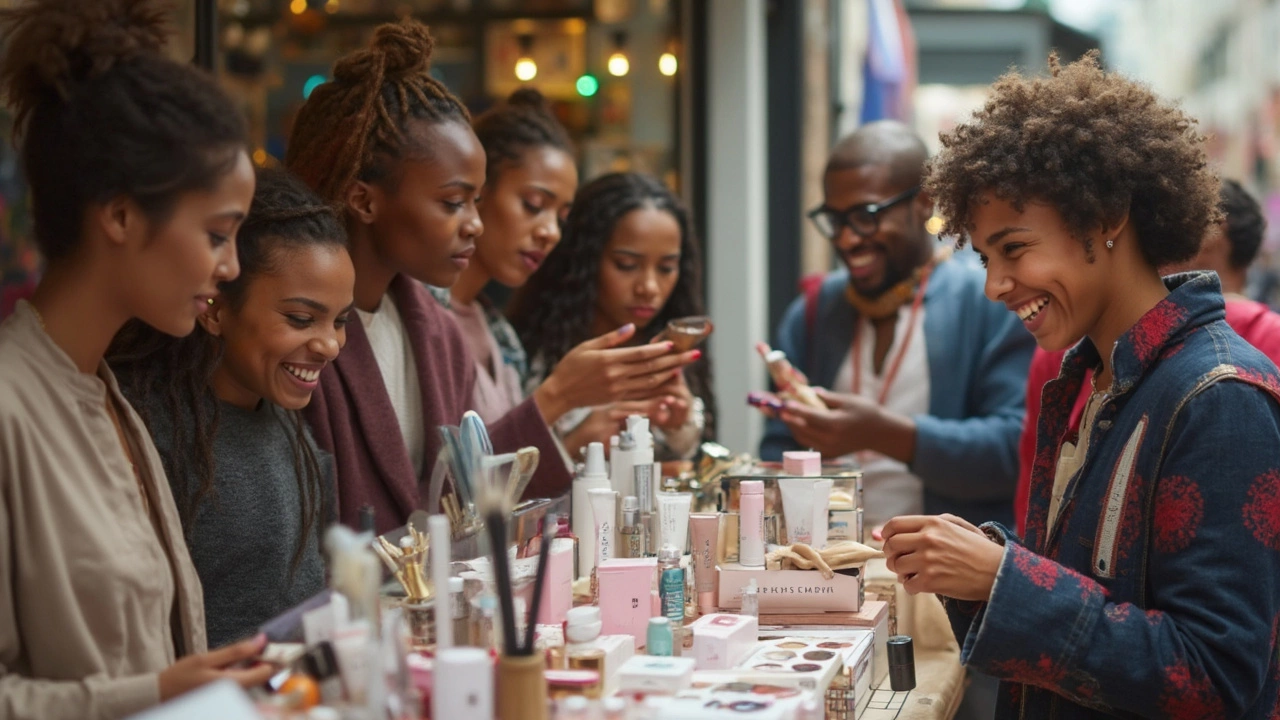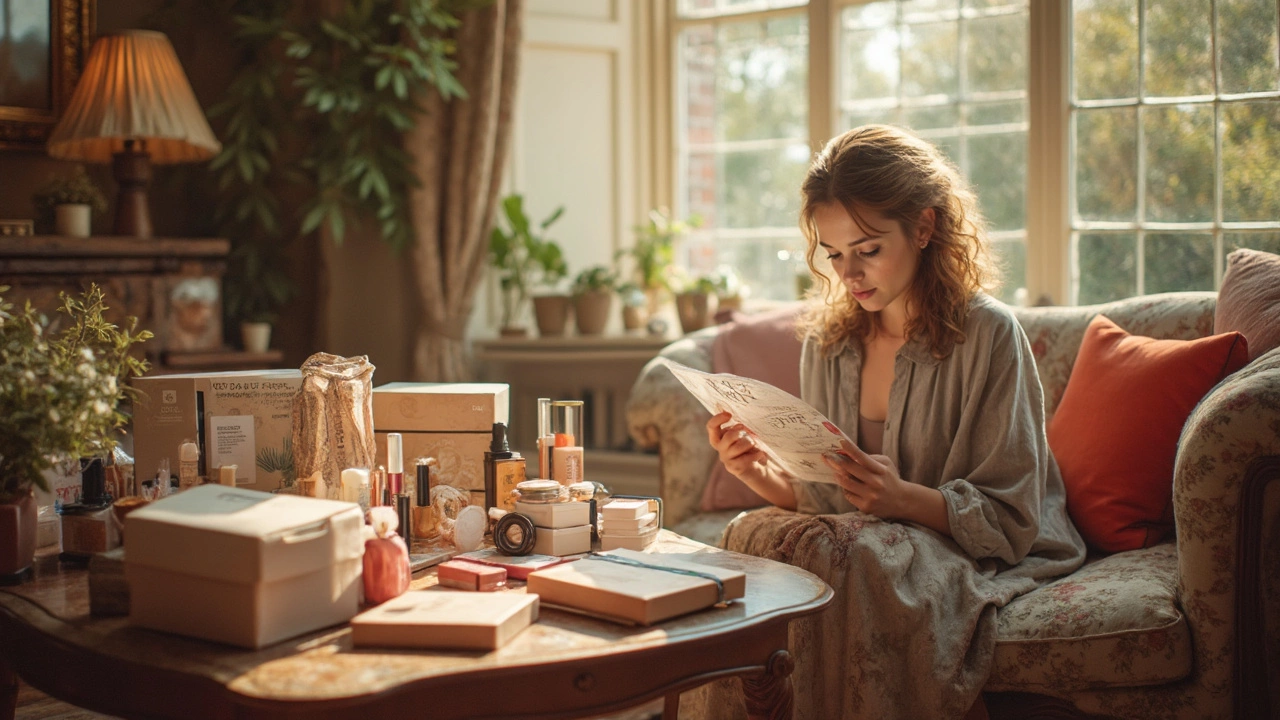Remember the excitement of those little beauty surprises tucked away each month in that colorful box on your doorstep? Beauty subscription boxes started as a fun way to try trendy skincare and makeup without breaking the bank. Brands like Birchbox and Ipsy made it possible to experience a mix of high-end and indie products, all while staying within budget.
But what's the deal now? Are they as popular as they used to be, or are people jumping ship? With more brands and influencers pushing direct-to-consumer sales, some think that subscription boxes might be losing their magic touch. It's like, why wait for a curated selection when you can pick exactly what you want when you want it?
- The Rise of Beauty Subscription Boxes
- Why Subscriptions Might Be Losing Appeal
- Current Trends Impacting the Beauty Box Industry
- Consumer Preferences: What Subscribers Really Want
- The Future Outlook: Adapting and Thriving
The Rise of Beauty Subscription Boxes
Back in the early 2010s, beauty subscription boxes were nothing short of revolutionary. The idea was simple yet genius: allow people to try new beauty products without the stress of hefty price tags or commitment. Brands like Birchbox and Ipsy capitalized on this, gaining popularity rapidly as they brought variety and surprise to consumers.
These subscription services tapped into the burgeoning desire for personalization and discovery in the beauty industry. Every box was a curated selection tailored to the subscriber's preferences, with a mix of makeup, skincare, and fragrance samples that felt like unwrapping a mini gift every month.
Why They Caught On So Quickly
It wasn't just the allure of new products; it was the convenience. In a world where time feels ever-limited, the idea of skipping the store and having a handpicked set of products delivered was beyond appealing. Plus, the price point was often around $10-$20 per month, making it accessible to a wide audience.
The Social Media Boost
Social media played a massive role too. Unboxing videos flooded YouTube, with beauty enthusiasts sharing their hauls and reviews. This free marketing exponentially increased user interest. Seeing influencers excited about the latest shiny highlighter or cruelty-free moisturizer became infectious, driving viewers to subscribe.
According to a 2020 survey, the beauty subscription market was valued at approximately $7 billion and expected to grow, showing a compound growth rate of around 12% annually. People loved the mystery and the excitement these boxes brought.
In terms of reach, by 2020, Ipsy had about 3 million subscribers. This shows the massive scale at which these boxes operated, connecting products with millions globally, introducing them to brands they might not have encountered otherwise.
The Perfect Storm of Consumerism and Discovery
Overall, the rise of beauty subscription boxes was fueled by a perfect mix of consumer curiosity, social media influence, and a growing trend toward personalized shopping experiences. As more brands joined the fray, the competition heated up, each aiming to offer something just a bit more special than the last.
Why Subscriptions Might Be Losing Appeal
So, why are some people moving away from beauty subscription boxes? A few reasons might come to mind. First off, the excitement of getting a box full of surprises might be wearing off. People are starting to ask if they're really getting their money's worth or just accumulating products they never use.
Product Repetition and Lack of Personalization
One major gripe is product repetition. No one wants the same lipstick shade five times in a row, right? It feels like some subscription boxes haven’t quite nailed the art of personalization. While algorithms aim to tailor boxes to individual preferences, the results often disappoint, leaving subscribers with generic selections.
Direct Access to Brands
Thanks to social media and online shopping, consumers can buy directly from the brands they love. Why stick to a mystery box when engaged influencers and dynamic brand websites showcase their latest offerings? Often, customers get better deals, seasonal favorites, or exclusive lines that aren't available through subscriptions.
Changing Consumer Habits
The way people shop has evolved. Consumers are savvier about sustainability, and buying habits lean towards quality over quantity. Consider this: more than 50% of beauty buyers now prioritize eco-friendly packaging and ingredients. Subscription boxes which don't align with these values often face consumer backlash.
The Element of Choice
There's also this thing about choice, or rather, the lack of it. Who doesn't like choosing their own products? Many have complained about the lack of control over what lands at their doorstep each month, which kind of defeats the purpose of personal care products tailored to individual needs.
While these are just some of the reasons beauty subscription boxes might be losing steam, it’s clear that the industry needs to shake things up a bit to keep up with customers' expectations. More personalization, eco-friendly choices, and better curation could make all the difference in winning customers back.

Current Trends Impacting the Beauty Box Industry
The beauty subscription box industry has seen quite the rollercoaster ride over the past few years. With all the choices out there, it's important to understand current trends that are impacting these beauty subscription boxes. Let's dive into what’s happening now and why it matters.
Personalization is Key
More than ever, people want products tailored to their specific needs. Subscription boxes are trying hard to keep up, offering personalized choices based on surveys and preferences. Some even use algorithms to pick what's best for you. This shift towards personalization is huge, as it makes the experience feel just a bit more special.
Eco-Friendly and Sustainable Options
Today’s consumer is much more environmentally conscious. Beauty companies are taking note by launching boxes that include sustainable packaging or cruelty-free products. It’s a win-win, letting customers pamper themselves without guilt.
Rise of Influencer and Brand Collaboration Boxes
These days, many influencers partner with brands to create exclusive boxes. This trend taps into loyal fan bases and offers unique branded experiences that can only be accessed through the subscription service. It's a way of marrying influence with product discovery that's proven quite effective.
Data-Driven Approaches
Some companies are getting smart with data, using it to keep track of what’s hot and what’s not. This leads to better product selection and, ideally, keeping subscribers happy and coming back for more. It's about staying ahead in a fast-paced market.
| Trend | Impact on Industry |
|---|---|
| Personalization | Increases customer satisfaction |
| Sustainability | Attracts eco-conscious buyers |
| Influencer Collaborations | Builds brand loyalty |
| Data Usage | Enhances product selection |
Consumer Preferences: What Subscribers Really Want
When it comes to beauty subscription boxes, subscribers today are getting choosier about what really hits the mark. It's like each box needs to feel like a personal love letter from the beauty world.
Personalization is Key
The top demand seems to be customization. People don't want just any random mix of products. They expect items tailored to their skin type, favorite brands, or even specific color palettes. Personalized boxes make subscribers feel understood, like their unique beauty needs are actually being considered.
Transparency and Value
Subscribers are also more aware of what's inside their boxes. They want transparency about the product ingredients and ethical sourcing. Plus, the perceived value of the box has to be higher than what they're paying. They prefer full-sized products over sample sizes, and if they spot familiar high-end brands, even better!
Focus on Trends and Innovation
Keeping up with trends is another biggie. Subscribers love when their box introduces them to the latest beauty innovations or trending products they haven't tried yet. This helps them stay ahead of the curve in their beauty routines without spending a fortune.
Convenience Overload
Finally, convenience. Consumers prefer subscription services that offer flexibility, whether that means pausing or canceling subscriptions easily or choosing specific delivery frequencies.
The takeaway? Beauty subscriptions need to feel like they're offering something special and personal. No one wants a box full of stuff they'll never use. It's all about making each delivery a little moment of beauty joy.

The Future Outlook: Adapting and Thriving
For beauty subscription boxes to continue thriving, it's all about adapting to consumer expectations and the ever-changing beauty landscape. What worked a few years ago might not cut it anymore, so innovation is key.
Customization is Crucial
One trend that's taken off is customization. Subscribers want a box that feels specifically tailored for them. So, companies that allow members to pick preferences or swap out items are more likely to keep their customers happy. It’s like getting a little gift from yourself each month.
Focus on Sustainability
With more people focusing on eco-friendly practices, beauty boxes have to reflect this shift. Offering products that prioritize sustainable packaging or promoting brands with ethical practices can set a box apart. Companies that don’t address this might end up losing ground in the beauty trends game.
Pricing and Perceived Value
Subscribers are becoming savvier, often comparing the monetary value of the box with its cost. So, subscription services must strike a balance between offering high-quality and full-sized products while keeping subscription costs reasonable. In fact, a 2023 survey suggested that 68% of beauty box subscribers consider canceling their subscription if the value doesn't meet their expectations.
Social Media and Community Engagement
Businesses integrating social media engagement and creating a community around their brand can thrive. People are more likely to stick to a box if they feel part of a like-minded community. Encouraging unboxing videos or sharing stories across platforms can build a loyal fan base.
In essence, the future of beauty subscription boxes is all about keeping finger on the pulse of consumer desires and industry trends. Companies willing to adapt and innovate are more likely to succeed in the evolving market.
